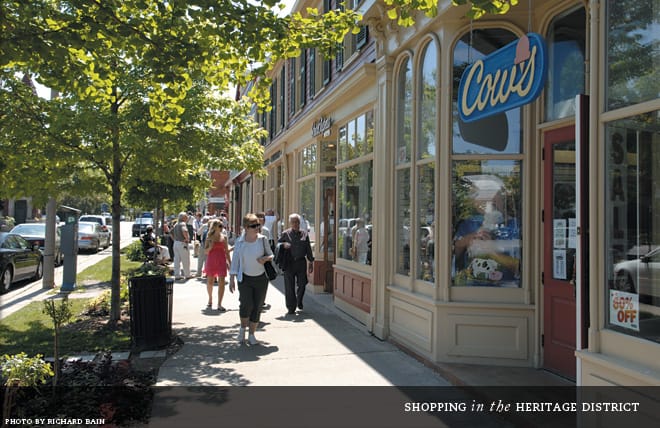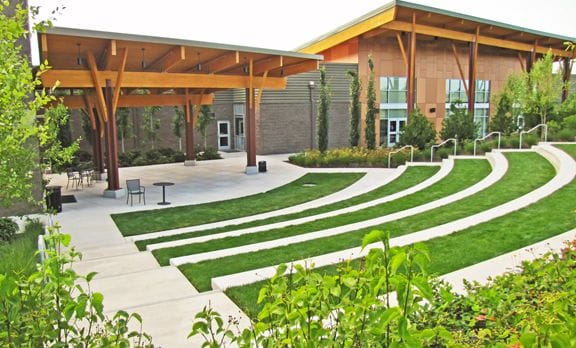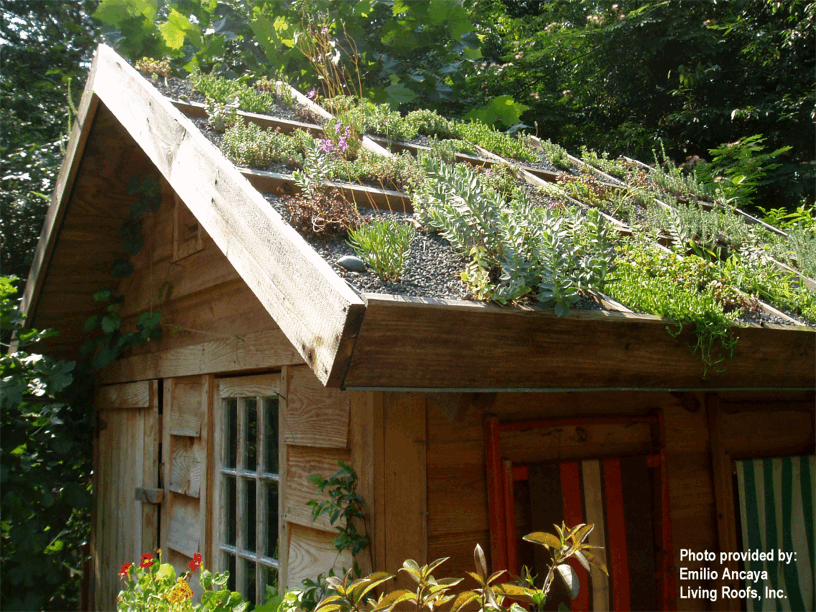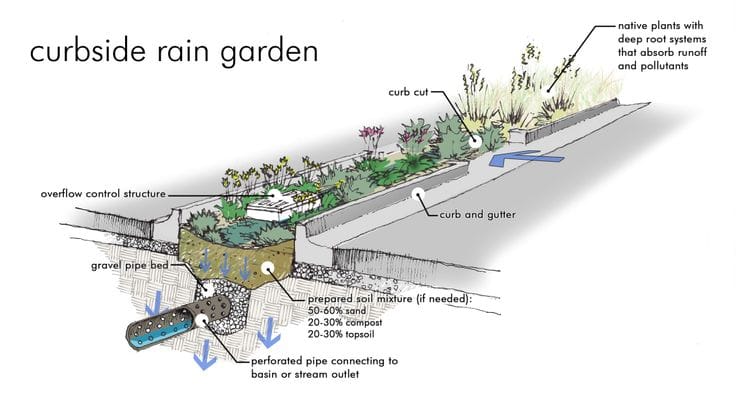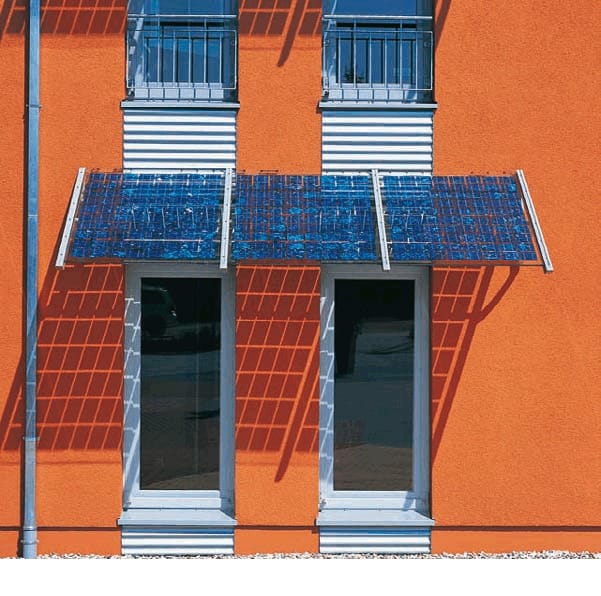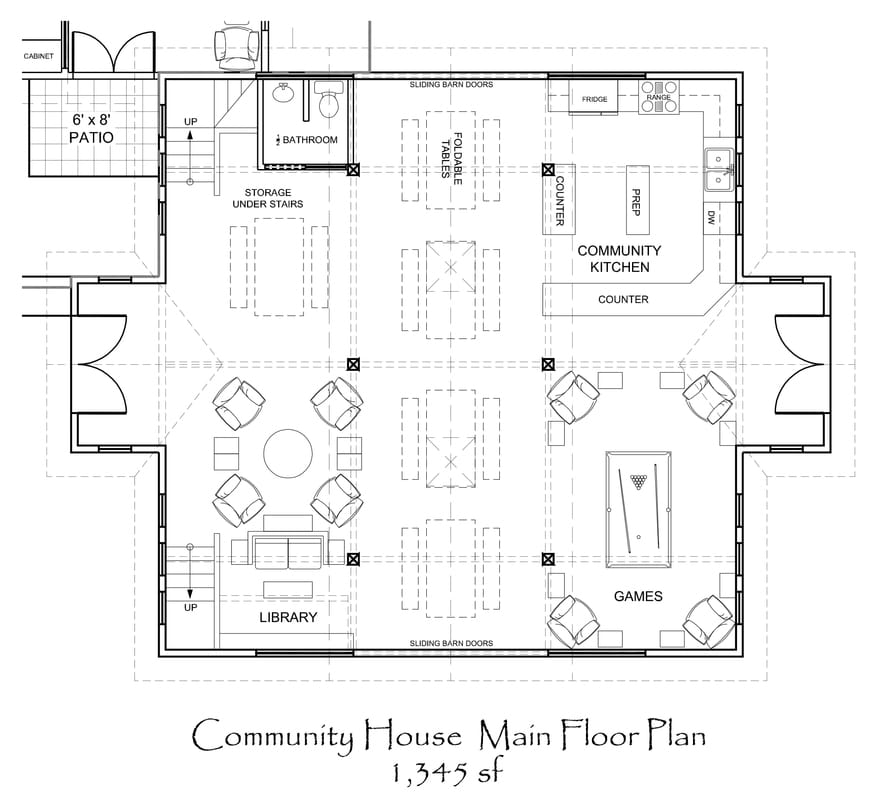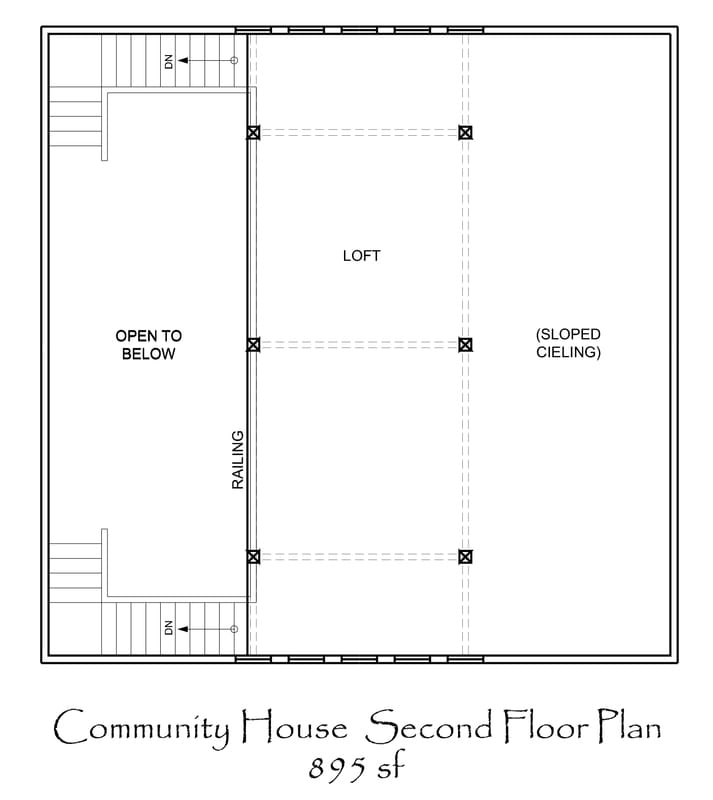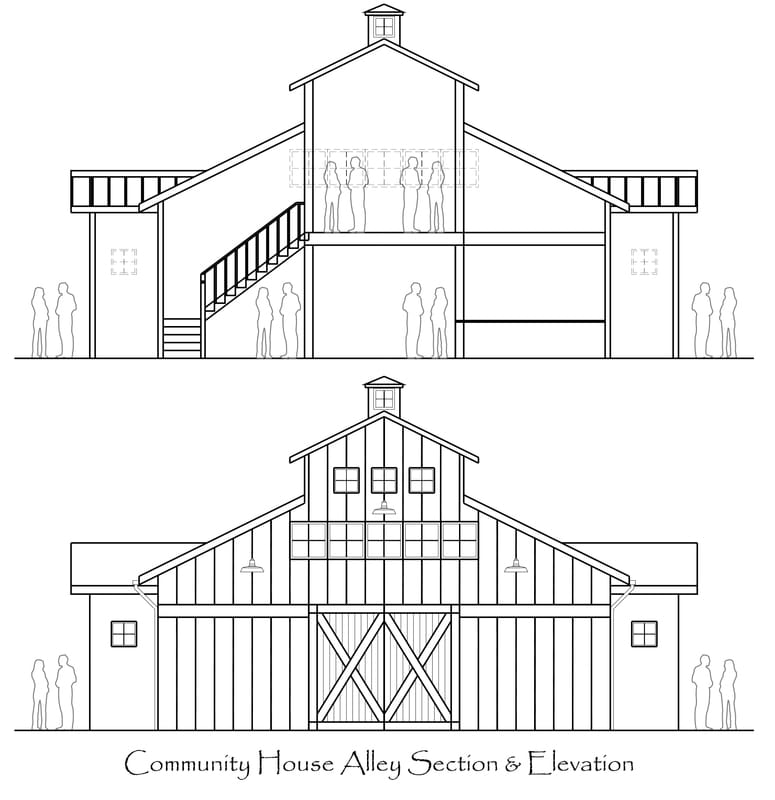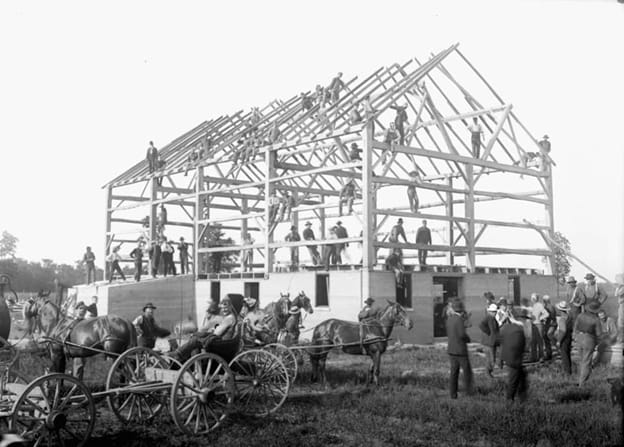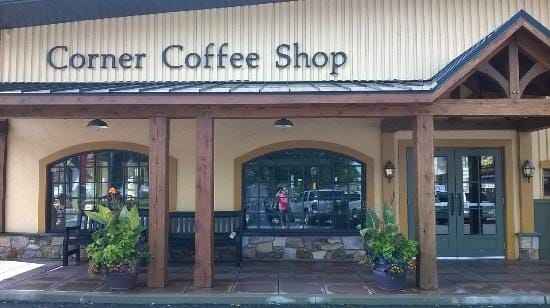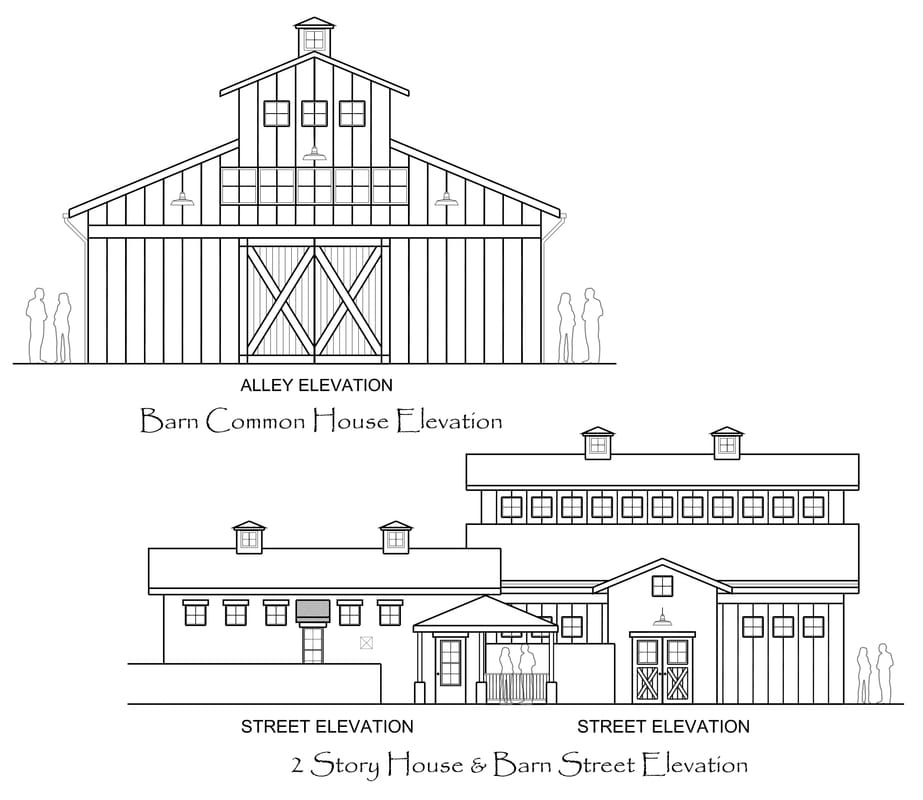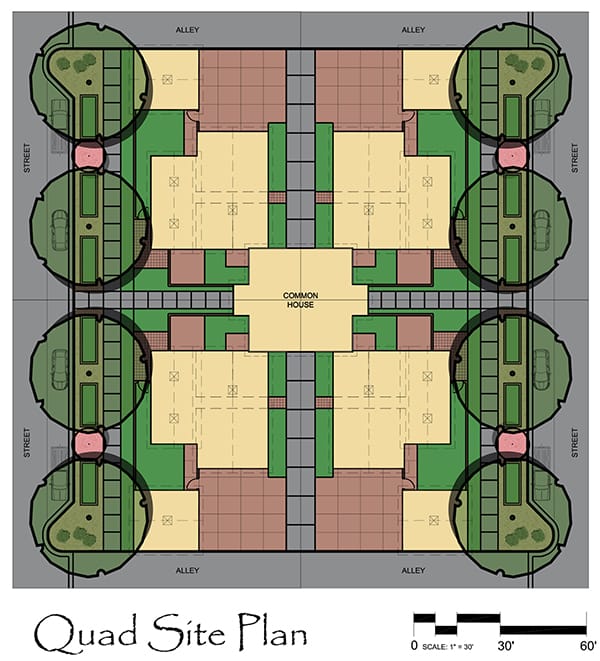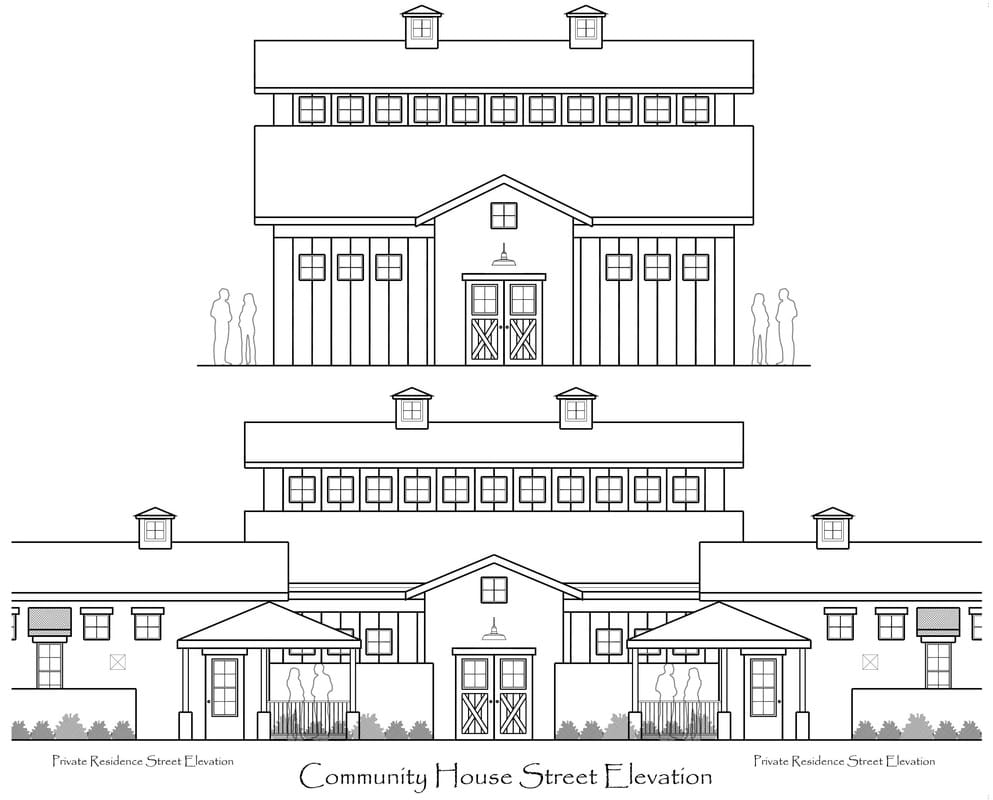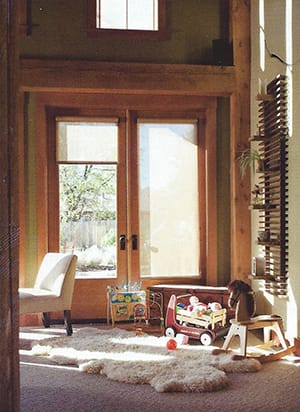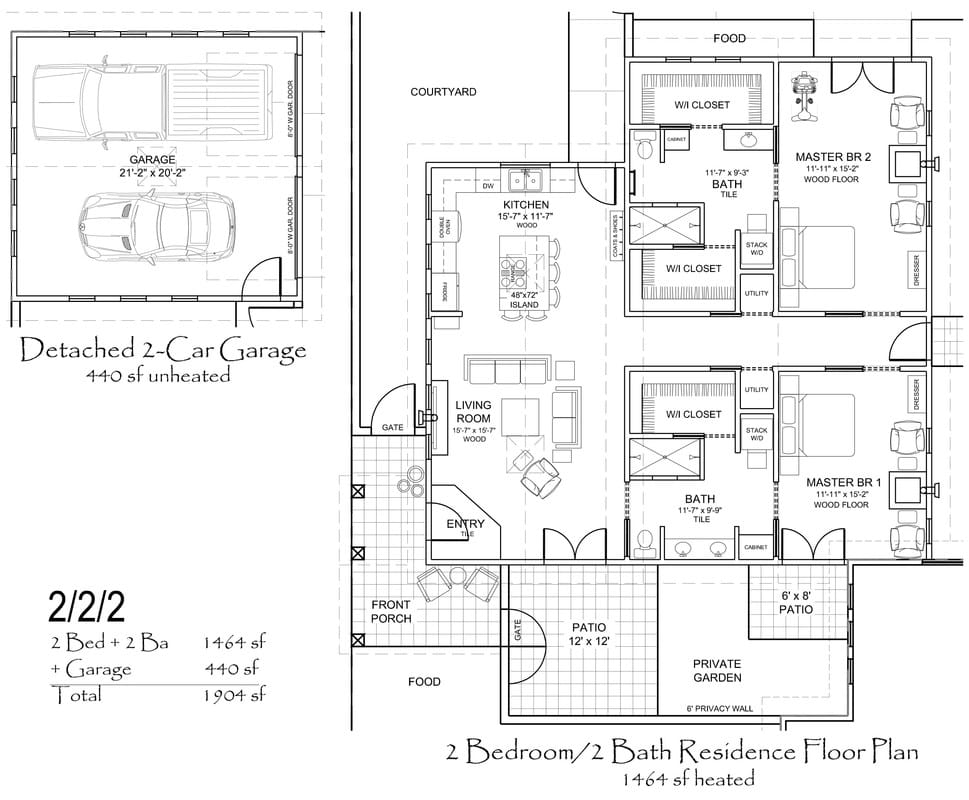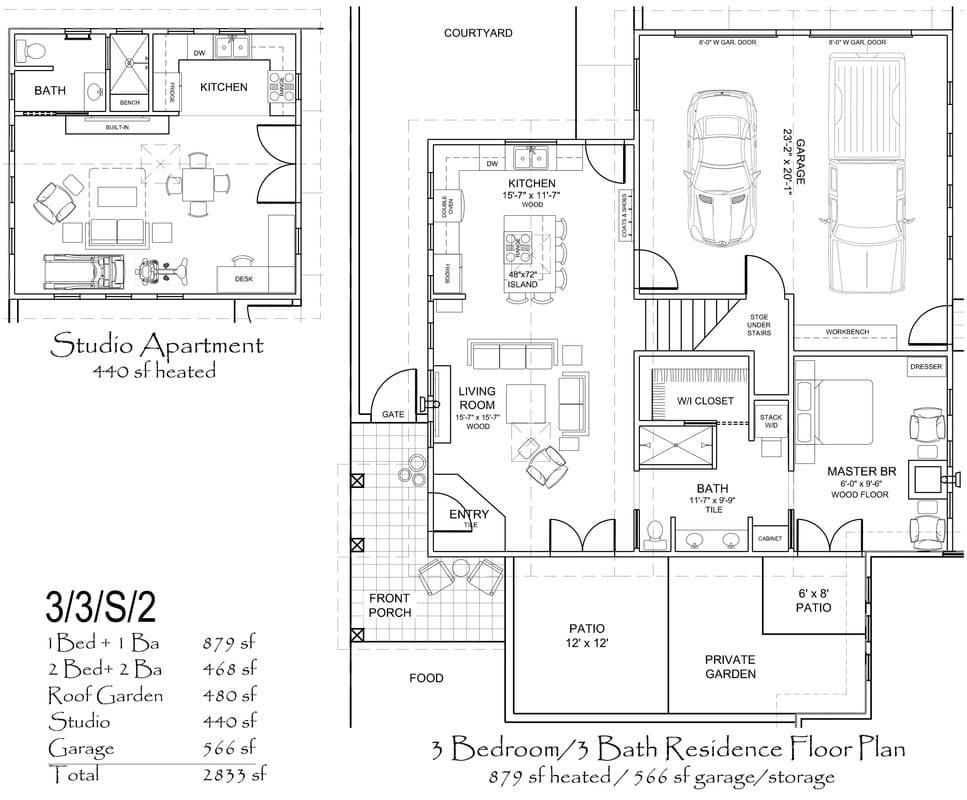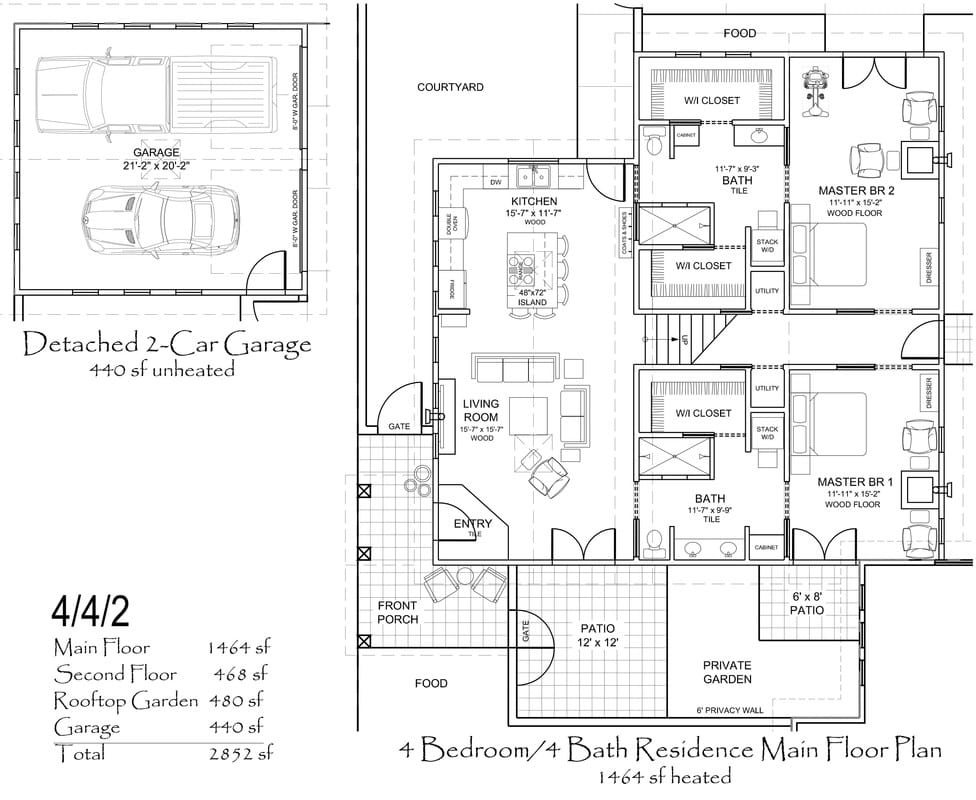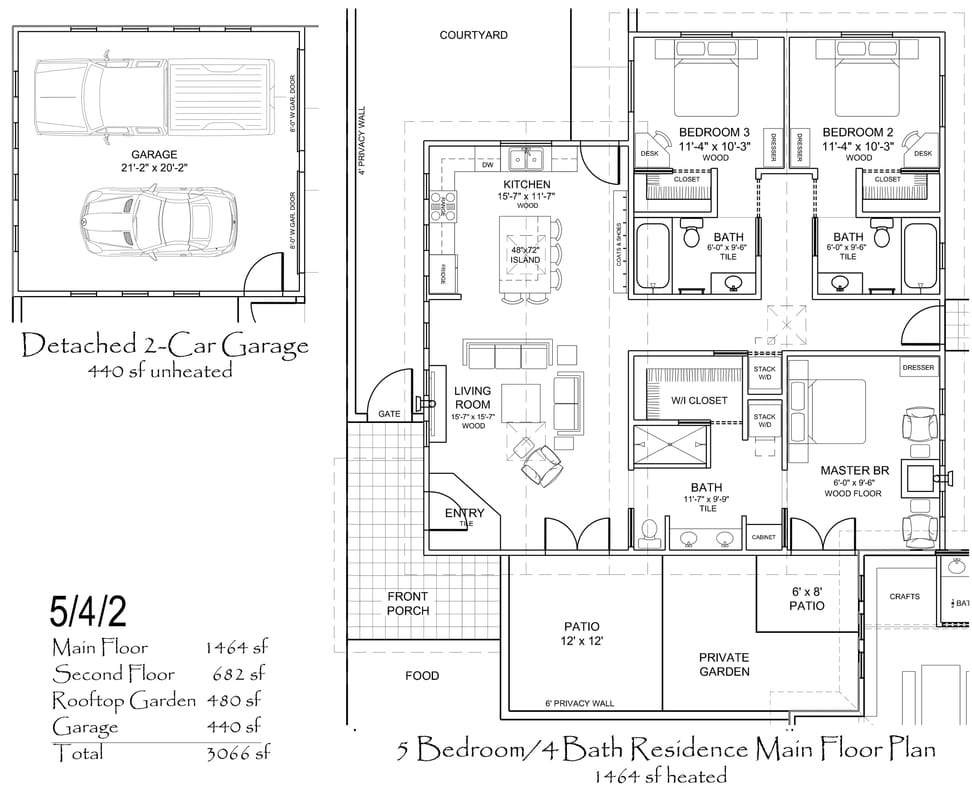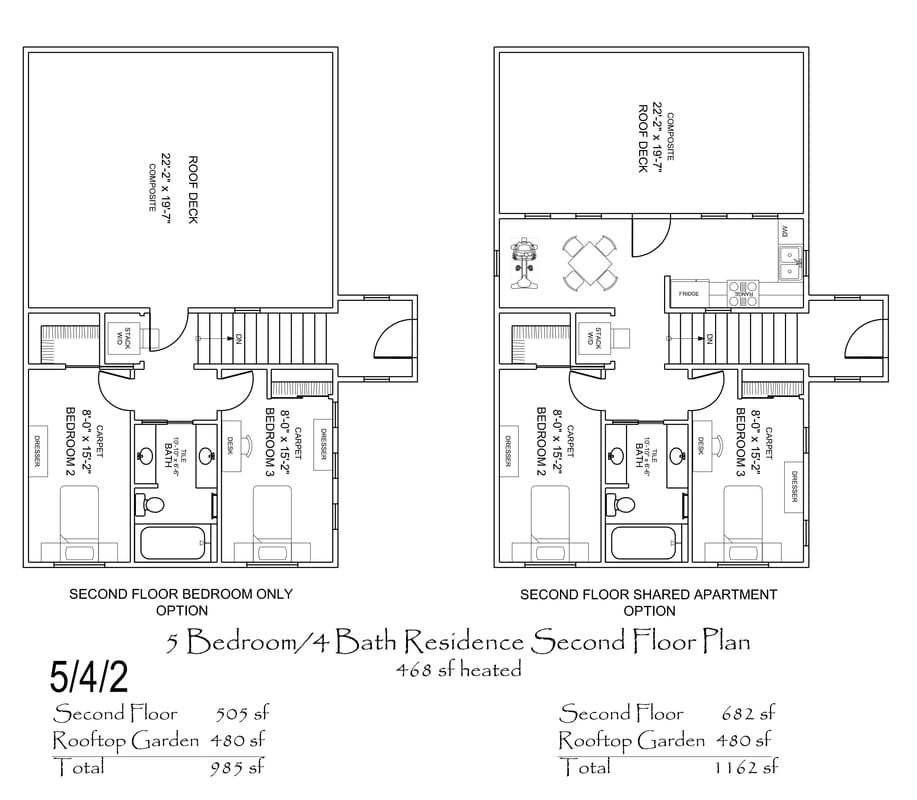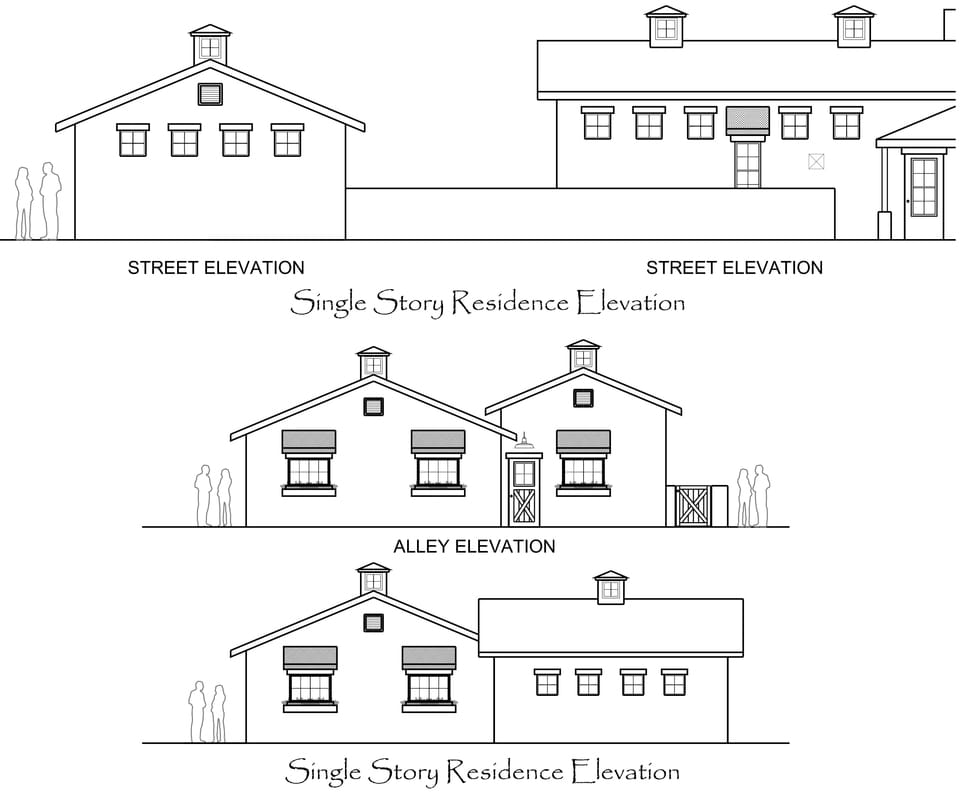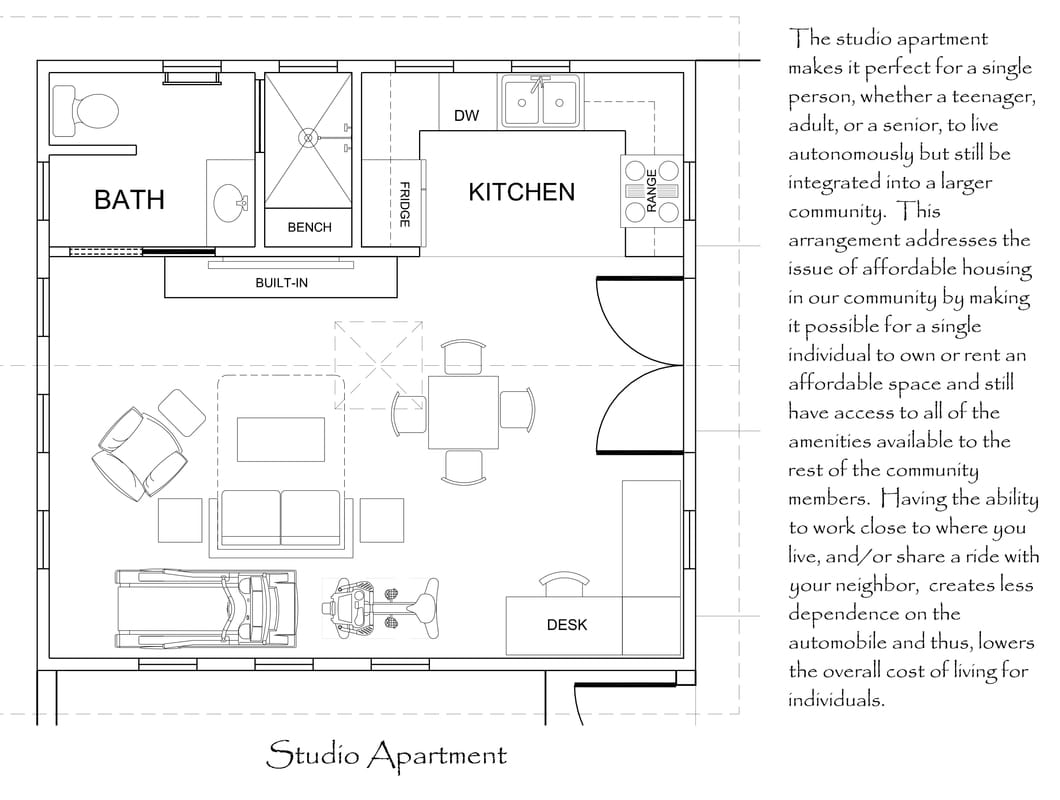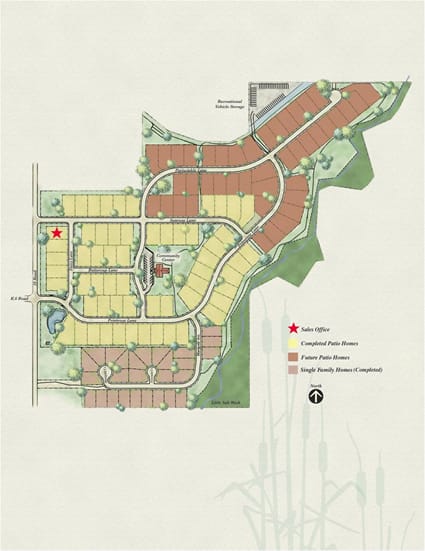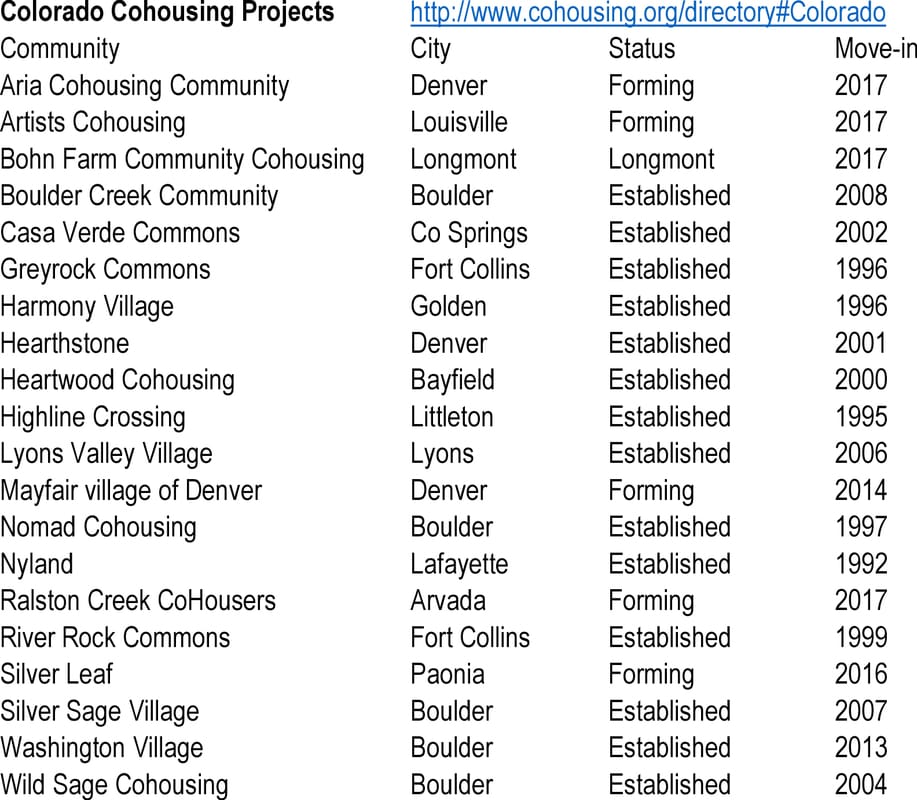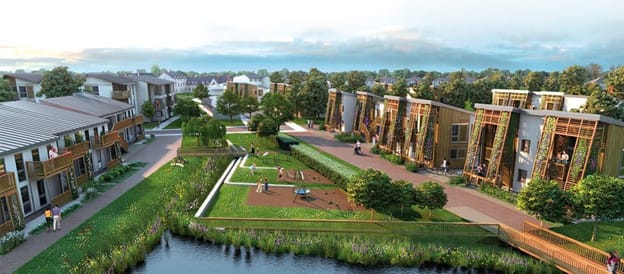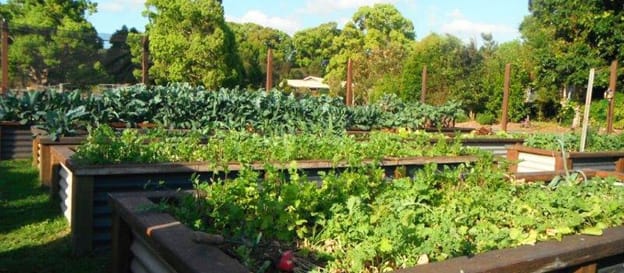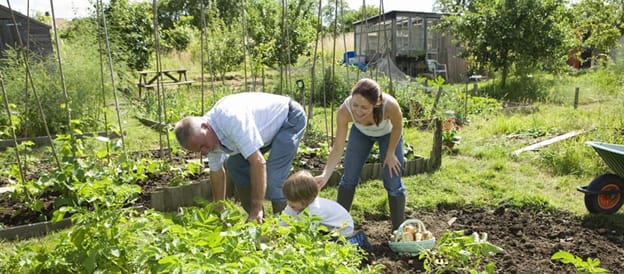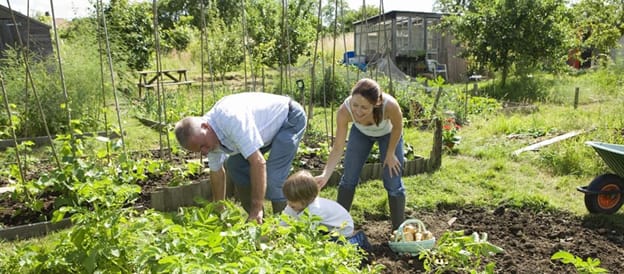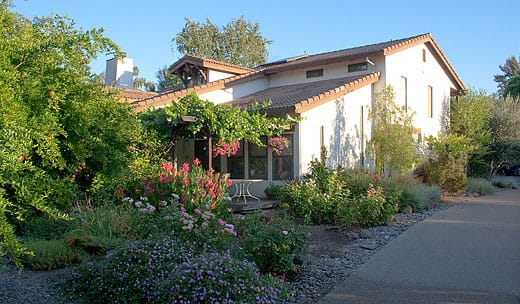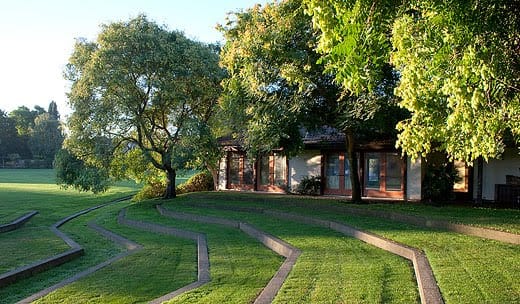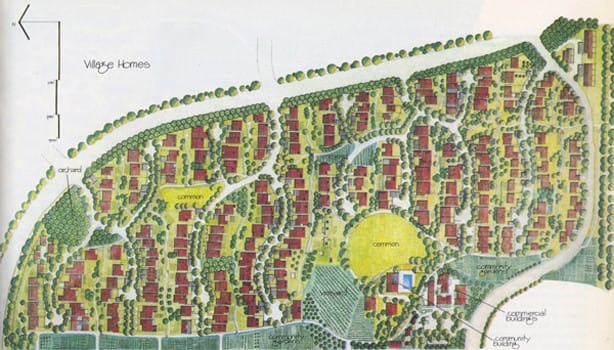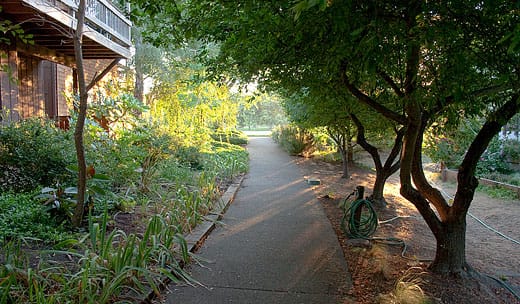Red Barn Village Western Colorado |
|
Vision Statement
In today’s ever-increasing consumptive and fast paced world, life can get a little overwhelming. Research has shown that Americans are becoming more disconnected with the natural environment and with each other. We aim to change that at Red Barn Village. Life in Western Colorado offers a more rural and relaxed way of life than in the big cities and we believe we can compliment that way of life even more! Red Barn Village aims to create an interdependent mixed-use neighborhood that offers indoor and outdoor activities, community connectivity, a live-work-shop experience, environmentally sustainable development practices, with flexibility and affordability all within walking distance. People can sometimes feel isolated and alone in a rural setting developed for the car. We love the freedom our cars can give us but there’s little doubt that we can become overly dependent on them. Added to that issue, Baby Boomers are retiring in record numbers and Millennials are setting out on their young adult journeys in full force. No matter what our demographic is, it just makes sense to desire a quality of life spent doing activities that we enjoy and that fill us up mentally, physically, emotionally, and spiritually. Red Barn Village invites you to walk or ride your bike to work or to nearby shops. Enjoy the benefits of eating fresh, locally grown organic fruit and vegetables and locally raised grass-fed meat. Community members will enjoy a pedestrian-friedly environment with front porches, tree-lined sidewalks, local shops, office space, and neighborhood services. And thanks to Western Colorado’s unique climate, the community will utilize the sun, earth, and wind to produce more energy than it consumes. Indoor & Outdoor Activities Residents will enjoy many outdoor activities from walking and jogging along tree-lined streets to playing Frisbee in the nearby park with the kids and grandkids. A community center will provide access to exercise classes, pot-luck meals, educational classes or documentary viewings, swimming, and an outdoor amphitheater for those warm summer nights where a concert, movie, or live performance will be displayed under the stars! Community Connectivity Residents will feel connected to their neighbors through the many social activities available. Regular get-togethers in the community barns may include a weekly football game or a sewing, scrapbooking, or quilting class; a book club meeting or a cooking class; a game of pool or ping-pong. Residents may choose to share a meal, or hold a small group bible study or host a story reading or educational seminar. The list of options is nearly endless. Residents will also be able to share resources such as tools, cars, bikes, and books, making life more simple and affordable. Helping each other out will become second nature again simply because that’s what we do here! Parks, gardens, and community amenities will all be within close reach. "It's through the activities in the common house that we get to know each other and are able to keep in touch. And that carries over to outside, adding life to the street scene." Sun and Wind Cohousing Resident Beder, Denmark Live – Work – Shop Residents will also enjoy the ability to walk to work or to locally owned shops in the neighborhood accessing your neighborhood coffee shop, yoga studio, or your own workplace in just a matter of minutes! Grab a bagel or a book, an eye exam or an iPhone and be home in plenty of time to watch your favorite show. The village plan has been designed to allow for any of the residents to take a 10-minute walk from edge to center, making getting around not only easy and functional but enjoyable as well. Public parking for cars will be integrated into the neighborhood under the shade of tree-lined streets making it comfortable in the summer heat. Environmentally Sustainable Development The community will be built upon a foundation of Permaculture concepts. Food will be integrated into the common landscapes and gardening will be a central focus of the outdoor spaces especially near the homes. Fruit and nut trees, perennial shrubs and herbs, and annual vegetables will be grown and available to the residents. If organic gardening and edible landscaping is your thing, this will be the community for you, and the best part is you won’t have to do it alone! Food harvested here will be as fresh and local as you can get, without the use of toxic pesticides, herbicides, and genetically modified organisms. If you only want a small private garden or none at all, your private space is there to use as you desire. Storm drainage will be diverted into “bioswales” designed to filter unclean water biologically and return it back into the groundwater table. By combining this practice with annual mulching, the soil over time will become more fertile and hydrologically stable reducing the need for large applications of water in the landscape during the dry months. Rainwater from roofs in the community will be stored in rain barrels and will also be diverted into a central holding pond that will be used to irrigate the community gardens. Multiple strategies to achieve an energy surplus community will be implemented such as photovoltaic roof panels and window awnings, hot water solar panels, passive solar architecture, tree-lined fruit and nut trees for food, shade, and wildlife, super-insulated airtight buildings, micro wind generators, energy recovery ventilation systems, and green roofs or rooftop gardens to help cool summer building temperatures. Your health and well-being is a primary design consideration at Red Barn Village. Buildings will integrate clean, non-toxic materials to provide a healthy interior environment. Outdoor spaces will be designed to provide not only food, but healing, contemplation and comfort. Affordability and Flexibility The affordability of each home in the neighborhood will be based largely on the flexibility and variation of the floor plans. The architecture has been developed with the idea of modular combinations. We recognize that housing situations today need flexibility, so we have created many different combinations or arrangements to accommodate individuals, couples, and families accommodating a wide range of incomes. Some combinations also integrate rental units making the homes a great investment. Not only will the energy surplus homes make you money and reduce your cost of living from day one, the income from the rental units have the potential of helping a homeowner offset the cost of a large mortgage. The homes have the option of a single or two story floor plan making each arrangement ideal for aging Baby Boomers, entry level Millennials, and everyone in between. The single story units will also be ideal for handicapped or wheelchair bound individuals, and people with limited mobility or vision. The common houses, community gardens, and the walkability of the neighborhood will also contribute to keeping costs low for the residents by encouraging the sharing of resources and food grown on-site, and the ability to live close to work and shops. In addition, rather than reducing construction standards to cut back costs, some residents may choose to do some of the construction themselves - primarily interior finishes such as cabinets, flooring, and painting. This will further promote community engagement by helping one another with the construction of their homes and the common houses. |
|
Why Do We Need This Type of Community?
Red Barn Village is an idea built around community life. In the “olden days”, communities had “barn raisings” where the collective community would gather together to build a barn for someone that would take one person many years to complete on their own. People got to know each other during these events and relationships were strengthened through the hard work and time spent together. Having many people involved was a true blessing because each person had a unique gift and set of skills to offer. The barn raising allowed an opportunity for everyone’s gift to be used, and people really enjoyed that sense of usefulness. We were designed to live and work together to achieve common goals. That idea is the foundation that project will be built upon. It values the need for individual privacy but equally values the connection we need with other people. This community will provide the following social and cultural benefits: 1. People will feel like they belong to something greater than themselves. 2. Seldom used items will be shared (tools, equipment, cars, bikes, etc.). 3. Accomplishing tasks in a group setting to achieve great things. 4. Lower cost of living due to cost sharing and community efforts. 5. Regular events that will build community and strengthen relationships. Compact Mixed Use Neighborhood If we can offer a community that invites a direct live, work, play situation, we will once again invigorate our neighborhoods with people. Dwellings, shops, and businesses of many kinds provide destinations within walkable distance that would create a very satisfying place to live. This type of community would be completely unique in Western Colorado. The singular unit of the house must be viewed as a component of the larger community to provide cohesiveness which in turn contributes to preserving property values. When the community itself holds a high level of value in the form of walkable streets, easy access to shops, recreation, cultural events, architectural character, and public beauty and charm, the single element of the house within the overall context follows suit. Walkability The problem with most single-use zoned residential subdivisions is that while walking around within it is certainly possible, there is usually no real destination; so, walking becomes somewhat dull. In a true mixed-use neighborhood that is within a walkable distance of 5 to 10 minutes from edge to center (approx. ¼ mile or 1,300 feet), people can select multiple destinations without using vehicular transportation. This distance is an optimum arrangement because it responds to the scale of a human being and honors the physical limits of someone walking, not driving. Walking permits a person to experience his surroundings in a much more detailed way as opposed to when driving a car. Many types of shops can be visited in one outing which promotes small scale, locally owned businesses which in turn promotes more activity on the street resulting in better caretaking of the neighborhood and a safer environment. Affordable Housing Building mixed-use neighborhoods that are compact like they were prior to the mass production of the automobile is perhaps the best way to create affordable housing. By integrating multiple size dwellings into the entire neighborhood, housing for all ages and income groups becomes available. Inviting this diversity will generate a feeling among the residents that everyone fits into the overall fabric of the community. If the outer four walls can provide the structure necessary to accommodate many possible combinations inside each building the flexibility will be increased and will accommodate a wide variety of functions as needs arise. Interdependent Community Living Segregation of incomes, age, class, and race is a major problem in our culture. By creating a living arrangement that diversifies the type and size of available homes, the neighborhood can develop as a rich tapestry of inhabitants rather than a monotype. The inclusion of workplaces within the neighborhood also adds to the diversity of the neighborhood. Lack of Common Space Common space in most of our subdivisions is far too minimal. Without enough common space no social system can survive. Common areas provide two very important functions: 1. It makes it possible for someone to feel comfortable outside of his or her own private territory which allows a person to feel connected to a larger social system. Most of the suburban subdivisions that occur today did not factor this idea into the initial design and planning. 2. It acts as a place where people can meet out in the open and in plain view of onlookers, which encourages public interaction. The ideal amount of land dedicated to common space in each housing cluster should be a minimum of 25% of the overall area. This space will directly touch the privately-owned areas or at least be very near to it. Automobile Dependence The dependence we have on our cars in Western Colorado is a major problem. Watching my own children transition from their early teens into adulthood has made it very evident that without a car, insurance, and a driver’s license, a teenage person has a very hard time getting around. In all reality, there is no choice but to become part of a car based society. This is a result of zoning which separates work from home by enough distance that a car must be used to get back and forth. Not only does this separation create a dependence on the car but it forces us to spend more and more time in the car to commute. This community will provide workspaces within walking distance which will not only help make life more affordable but will reduce traffic congestion and urban sprawl. It could also be argued that this type of arrangement will increase air quality, reduce traffic accidents, increase physical activity, improve water quality (less chemical toxins from cars falling to the ground and washing into the water supply), reduce the heat island effect by reducing the need for huge parking lots, improve mental health by reducing stress and road rage associated with commuting and in turn increasing the amount of time spent with friends and family members, and reduce the demand for gas and oil which is clearly reaching a critical level of capacity. Sprawl type development requires a system of living that is not sustainable. It is not healthy growth and could even be said to be self-destructive. The main problems include:
Parallel Parking Parallel parked cars along a street help to create a physical barrier and a psychological buffer that protects pedestrians on the sidewalk from moving vehicles. A rich supply of parallel parking can also reduce or even eliminate the need for centralized parking lots which can destroy a walk-able pedestrian friendly neighborhood. Some of the most desirable streets in America were designed with tree-lined streets with parallel parking and enjoyable sidewalks. The Conceptual Plan The site plan has been developed with one common house that resembles the look of a barn on the outside but is finished on the inside according to its function. It could become one of a long list of different uses such as a community living room or a coffee shop; a wine and cheese shop or a bookstore. Each common barn could be used for many different functions at any given time. It has been designed as a shell on the outside intended for flexibility on the inside, and in fact, it could take on any number of themes as the need arises. For example, if all four residents surrounding their common house wanted to use the common house for an artist’s studio, or an accountant’s office, or a small grocery store, it would be perfectly viable to do so, as long as the jurisdictional zoning laws allow for that particular land use. The decision of what each common house would become would fall first on the proposal of the surrounding four residents, with the final decision made by the community at large and the project leaders. One primary benefit of this idea is that it will allow the possibility for more people to work closer to home. Perhaps a few people in the community want to run a small market. It would be possible to grow local produce and possibly even raise grass fed animals to be used for sale in one of the common houses. Perhaps there is a group of people who make hand-made furniture, or iron hardware, or who do computer repairs. Each common house could be used for such activities. This amenity would make the property a true mixed use community where the public is welcome to shop and residents could work close to home. Surrounding each common house would be a cluster of four individual, privately-owned residences with 2-car garages. Each residence has been designed to accommodate several different combinations of layouts which would be suitable for a wide variety of situations. The available floor plans will vary from a 1 bedroom / 1 bathroom master suite with 2 car garage and flex space up to a 3 bedroom / 3 bathroom residence with a 2-car garage and an ancillary building that could be used for any number of uses such as an office, exercise room, craft room, art studio, work shop, or a mother-in-law or teenager cottage.
Each residence will be owned individually and privately and each common house will be commonly owned by the overall community. It is anticipated that common maintenance will be achieved using a full-time staff or hired sub-consultants which will include all common landscaping, irrigation, streets and sidewalks (repairs and snow removal), fences, etc. Homeowners dues will be assessed to cover the costs of community maintenance and repairs. Common landscape spaces will be used predominantly to grow food for the residents. This may take the shape of trees for fruit and nuts, shrubs for berries, and a variety of annuals and perennials such as seasonal vegetables and herbs. Each quad of homes and one community house fits in a square of slightly less than one acre. Each quad site has been set up to fit in a 200-foot grid which extends from the centerline of streets to the centerline of alleys. This is important from a layout perspective because it makes the planning, platting, engineering, and site development very simple and repeatable. By simply performing a double mirroring of each unit and each quad, a community can be laid out very quickly. This style of development would be the most cost effective on a relatively flat site (less than 5% slope) without a lot of undulations. The steeper and more varied the terrain becomes, the more expensive such a layout would be because of the grading and drainage requirements, as well as the slopes necessary for vehicles. Imagine living in beautiful western Colorado without the craziness and stress of the big city and at the same time alive with all of the culture and activity that you could desire. Walk across the street to a café for breakfast and then over to the park for a stroll. Do some banking, shopping, and buy a bottle of wine for dinner, all within minutes from your door. You’ll have close access to the highway for long trips and still be within minutes of medical facilities, shopping, and world class recreational amenities. Village Site Plan > |
|
Rural Style Is Just Around The Corner!
This place will soon be waiting for individuals, couples, and families! Brand new homes in a community housing village await buyers who desire: • to live in a traditional neighborhood setting complete with parks and porches, alleys and avenues, and plenty of open space. • to live within walking distance of several convenient amenities. • to live close to bike trails, walking paths, a park, submersed in clean air to live in a truly efficient renewable energy home complete with passive solar design, super insulation, solar domestic hot water, energy recovery ventilation systems, and rooftop photo-voltaic panels. • to contribute to environmental stewardship through biological water filtration, green building practices, recycled and clean building materials. • to be close to good elementary, middle, and high schools. Healthy & Productive Architecture A primary focus of the architecture for this project is centered around the concept of “Healthy & Productive”. We believe that every home should support the health of its inhabitants and has the ability to produce some sort of return, rather than simply being inert and consumptive. We are aiming for more than just “sustainability”; the systems in these homes will not only generate enough electricity, heating, cooling, food, water, and comfort for their owners, but will actually tip the scales and generate a surplus for others to use. In addition, these homes will: • use clean, healthy, non-toxic and low-toxic, environmentally friendly building materials and finishes • conserve resources through efficient design, creative techniques, and material selection • utilize passive solar and thermal mass storage techniques • utilize super-insulated, air-tight, geo-assisted energy recovery and ventilation systems • integrate geo-thermal domestic hot water heating • utilize the sun through photo-voltaic solar panels to produce electricity • integrate window and floor shading into architecture • use durable materials with recycled content where possible “In this era of unprecedented technological advancement, it stands to reason that we would use our knowledge to create indoor environments with exceptional vitality that would enhance our health and our sense of well-being. But this has not been the case.” Paula Baker-Laporte A Healthy House Environmental Site Planning using Permaculture Concepts • Natural drainage swales (called “Bioswales”) from roofs and streets for slowing water, capturing snow, and for watering trees and shrubs. • Solar orientation for photovoltaics, solar water heating and passive solar architecture. • Wide diversity of plants to encourage beneficial insects & increase fertility. • Integrate food and Nitrogen fixing plants into landscape design-fruit, nuts, berries, annual vegetables. o On-site farm manager o Seasonal harvesting o HOA Fees for garden management • On-Site soil building program (compost and green manures). • Shade and cooling devices such as vines over trellises and solar panel window shades. • Greenhouses and sun porches for fall winter and spring growing. |
|
STANDARD ARCHITECTURAL FEATURES
• Multiple Floor Plan and Elevation Configurations • Spacious Master Bedroom and Bathroom on Ground Floor with Electric Fireplace • Low-Toxicity Building Materials and Finishes • Multi-Purpose Room and Library • Hydronic In-Floor Radiant Heating • On-Demand Hot Water Heater • Energy Star Appliances • Energy Efficient LED Lighting • Space-Saving Stack Washer / Dryer • Nine-Foot Ceilings • Low-VOC Non-Toxic Paint • Elegant Base and Trim • Walk-In Master Closet and Pantry • Walk-In Shower with Cultured Marble Seat • Entertainment Center with Wide-Screen TV and Surround Sound • Custom Designed Kitchen Cabinets • Tile Entry, Kitchen, and Bathrooms • Two-Car Garage with Insulated and Finished Walls • Pre-Wired for Data, Phone and Cable • Private Enclosed Courtyard • Space-Saving Decorative Interior 6-Panel Pocket Doors • Two Freeze-Proof Exterior Faucets • Double Glazed Low-E Windows • Fiberglass Insulated Exterior Doors • 2x6 Exterior Walls with Energy Saving Insulation Package • Energy Recovery Ventilation System • Levered Door Handles • 5 KV Photovoltaic Solar Array • South-Facing Balcony • Covered Rooftop Patio • Whole House Water Filtration System OPTIONAL ARCHITECTURAL FEATURES • Six-Foot Jetted Tub for Master or Guest Bath • Ceiling Fans • Gas Line for Outdoor Grill • Upgraded Carpeting (Low Toxicity Materials) • Security and/or Sound Systems • Designer Light Fixtures • Designer Cabinets • Deluxe Appliance Package • Designer Plumbing Fixtures • Hook-Up for Gas Ranges, Dryer, or Gas Fireplace • Built-In Shelving • Radon-Free Granite Countertops • Custom Designed Courtyard Space • Custom Designed Rooftop Patio • Rooftop or Courtyard Greenhouse |
Market Research & Resources
Tips for a Healthy Home
Paula Baker-Laporte Healthy Home Consulting and Design
http://www.paulabakerlaporte.com/articles/tips-for-a-healthy-home/
Site
The following should be avoided:
•Air and noise pollution from traffic and industry.
•Pesticide use in the neighborhood.
•Winter air pollution from neighboring fireplaces.
•Proximity to high power lines, radio, TV and microwave towers.
Foundation
•Check for good perimeter drainage away from the building.
•Check for signs of rot or insect infestation.
Basement or Crawl Space
•Look for watermarks that would indicate flooding or backed up drains.
•Does the space smell damp or moldy? This may be an indication of poor perimeter drainage.
Roofing
•The best roofs are sloped with sufficient overhang that move water and snow away from the building perimeter.
•“Flat” tar and gravel roofs are subject to failure, require frequent replacement and emit toxic fumes when new.
Kitchen
•An electric range/oven is the best solution for a chemically-sensitive person.
•Newer gas ranges with electronic ignition are better than older pilot-light systems.
•Unvented ranges or vent hoods that do not duct to the outside are unacceptable.
•At least one operable window is desirable.
•A carbon monoxide monitor is advisable if the kitchen contains gas-fired appliances.
•Cabinets of solid wood or metal are best. Boxes are commonly made of composite sheet goods containing urea formaldehyde. If unavoidable the formaldehyde emitting boxes should be well sealed with a low VOC sealer or foil.
•Check for moisture damage or leaking at sink area, and make sure there is no moldy smell under sink.
Bathroom
•Should have a mechanical vent fan rated at minimum of 100 cfm.
•An operable window is desirable.
•Cabinetry — same criteria as kitchen.
•Check for signs of water damage, mold or mildew.
•Wall to wall carpeting in bathrooms is unacceptable.
Garage
•A detached garage is best.
•If attached, an airlock between the garage and living space with a well-sealed door is essential. Fumes will also seep through holes in the wall such as at electrical boxes or under an improperly sealed sill plate.
Mechanical System
•Passive-solar heating is absolutely non-toxic!
•Hot-water radiant-floor heating or hot water radiant baseboard heating are more comfortable because they heat objects.
•Forced air heating heats the air and unless properly augmented with fresh air and filtration, it is often a source of dust and air pollution.
•Open gas-combustion heating systems are unacceptable.
•Electric baseboard systems may have high EMF’s associated with them.
•Good insulation, perimeter portals and, and good cross-ventilation can greatly reduce or eliminate the need for summer air-conditioning.
•Gas-fired mechanical systems if located within the building envelope should have sealed combustion. Gas fired hot water heaters should be direct vented, power vented or have sealed combustion.
•It is healthiest to have temperature variation. We do not serve our health (and inordinately increase energy consumption) by demanding 73 degrees in all 4 seasons.
Flooring
•Wall-to-wall carpeting should be avoided especially if it is new, old, cleaned with toxic cleaners, or dirty.
•Factory sealed and fully cured hard surface flooring is a durable low maintenance solution, especially for tile and wood floor applications.
•Synthetic resilient flooring materials can be a source of toxic fumes, and in older homes may be a source of asbestos.
•Pressboard or chipboard subflooring, containing urea formaldehyde is undesirable although common in most current production housing.
Electrical
•Wiring in metal conduit is most preferred.
•Underground service to the building is preferred.
•Old knob and tube wiring is a source of magnetic fields and is a potential fire danger.
•Check dimmers and 3-way switches for EMF’s with a trifield gauss meter.
•Sleeping location should not be back-to-back with appliances such as refrigerators or TVs.
Common Hazards
•The house should be tested for lead paint, asbestos and UFFI insulation, radon and water quality. The gas system should be tested for leaks and the electrical system should be tested for net current due to improper wiring.
General
•Have the previous owners been smokers or used fabric softeners, deodorizers, mothballs, or pesticides within the home? These odors and toxins are persistent and will linger for a long time affecting the indoor air quality.
•The house should have good cross-ventilation, allow for moist air to leave building while avoiding negative pressurization.
•Good natural daylighting throughout the building is desirable.
•The home should be free of toxic finishes and paints. Although few new homes are built using non-toxic methods and materials, the majority of the construction materials will eventually outgas to a point where they are not a significant health threat.
New Homes
If you are building a new home consider the following:
•The site should be free of geopathic zones and radiologicals in soil and water
•The house should include floor drains for hot water heaters and laundry facilities, so that water leakage does not create flood damage and mold.
•Isolate motorized equipment from living space.
•Have back draft protection on all flues.
•Filter chlorine and other contaminants out of bathing and drinking water.
•Have circuitry run so that bedrooms can be isolated to the greatest extent and so that wiring runs through circulation space, not living space.
•Require that the electrician take care of any net current in the wiring, as detected by a gauss meter. Do not count on the electrical inspector to catch all violations.
•Building for health is a pioneering proposition requiring a dedicated owner, architect, builder team.
GREEN ROOFS
Benefits of Green Roofs
There are so many benefits to green roofs. Here are just a few:
-Adding natural beauty and major aesthetic improvement to buildings, which in turn increases the investment opportunity.
-Helping contribute to landfill diversion by prolonging the life of waterproofing membranes, using recycled materials, and prolonging the service of heating, ventilation, and HVAC systems through decreased use.
-Green roofs assist with storm water management because water is stored by the substrate, then taken up by plants, and thus returned to the atmosphere through transpiration and evaporation. They also retain rainwater and moderate the temperature of the water and act as natural filters for the water that does run off. They delay the time at which runoff occurs, which results in decreased stress on sewer systems during peak periods.
-The plants on green roofs do a great job of capturing airborne pollutants and other atmospheric deposition. They can also filter noxious gasses.
-They open up new areas for community gardens, commercial and recreational space in busy cities where this space is generally quite limited.
France is definitely on the right track, but it should be a mandate that all new buildings being built in North America, and even worldwide, adopt this amazing idea to reap all of the potential benefits.
Source: The Guardian
To learn more about green roofs, please click here: http://www.greenroofs.org/
Credit: Collective Evolution
http://www.realfarmacy.com/france-declares-new-roofs-must-topped-plants-solar-panels/
_______________________
http://www.spri.org/
As our name implies, SPRI is the recognized technical and statistical authority on the Single Ply Roofing Industry. SPRI provides the best forum for its members to collectively focus their industry expertise and efforts on critical industry issues. By acting as a trade organization, as opposed to each member working individually, the group can effectively improve product quality, installation techniques, workforce training and other issues common to the industry. This approach enables every SPRI member to operate more effectively in the commercial roofing marketplace.
SPRI represents sheet membrane and related component suppliers in the commercial roofing industry. Since 1981, SPRI has been an excellent resource for building owners, architects, engineers, specifiers, contractors and maintenance personnel, providing objective information about commercial roofing components and systems. This Web site provides many valuable resource documents, ranging from technical guidelines for design and applications to general information about roof maintenance and emergency repairs.
Ongoing Projects:
SPRI is always looking for ways to improve the quality of education on the industry. Projects are in place to: •Proactively advance technology
•Resolve technical issues
•Intervene and impact code and testing issues
•Monitor legislative and regulatory issues
•Provide accurate data relating to energy savings, recycling and other sustainability issues
SUSTAINABLE LIVING (source: GEOS Design Book)
http://discovergeos.com/
COHERENT AND CONNECTED RENEWABLE ENERGY
Live, work, and play in the neighborhood.
Neighborhood planning based on solar orientation.
Multi-modal transportation options.
RENEWABLE ENERGY GENERATION AND CONSERVATION
Passive solar and thermal mass for all.
Super-insulated, air-tight homes.
Geothermal domestic hot water.
Energy recovery ventilation systems.
Rooftop photo-voltaic panels.
ENVIRONMENTAL CHARACTER
Contemporary innovations on classic town planning.
Architecture respectful of history.
Porches, alleys, and tree-lined streets.
Integrated trails, parks, and plazas throughout.
Neighborhood spaces for all occasions.
ENVIRONMENTAL STEWARDSHIP
Water conservation.
Biological water filtration; permeable neighborhood designed to recharge water table.
State of the art green building practices.
Personal and community gardens.
Urban riparian systems.
Recycled materials.
Diverse ecological habitats – “urban-ecology”
LANDSCAPE
PATHWAYS, PARKS, AND SOCIAL PLACES: Integrated and Connected
Pedestrian Pathways follow the flow of water to give every home an “address” on the Ralston Creek trail
Greens provide neighborhood unity, active community uses, play areas, and natural habitat
Civic Spaces and Corner Plazas foster programmed and spontaneous uses for all occasions
QUALITY OUTDOOR SPACE:
Beauty, Comfort, and Function
Tree Lined Streets, Greens, Promenades, and Plazas create unity, shade, and pedestrian scaled outdoor rooms
Green Entry Courts create pedestrian transitions to groups of homes
South Facing Yards provide useful garden areas for ground floor residences
Community Gardens provide gardening opportunities and social interaction for all
Property Line Plantings establish boundaries and thresholds between public and private landscapes
Micro-climate and Habitat Diversity insures a full range of sunny, shady, domesticated, agricultural, and natural environments
WATER QUALITY: Maximum Permeability and Filtration
Percolation Park System merges storm water management with active community uses
Rain Gardens Throughout capture and infiltrate rain and snow melt to aquifer
Permeable Paving and Surfaces allow water to drain and reduce heat buildup
SMART WATER USE: Working with Our Climate
Xeriscape Plantings provide verdant beauty and reduced water needs
Efficient Irrigation focuses water without waste
Downspout and Parking Lot Tributaries direct runoff from impervious surfaces to rain gardens, planting areas, and lawns.
ARCHITECTURE
ARCHITECTURAL COMPOSITION:
Timeless yet innovative historic building types with historic or contemporary aesthetics
A variety of roof forms, including gables
Porches and arcades close to the sidewalk
Horizontal expression of ground story
Vertical proportions in windows
MATERIALS AND COLOR: Strong and Creative
Rich materials such as brick and stone
High-quality, long-lasting materials such as brick and stucco
Saturated colors contrasted with muted colors
Use a range of materials to achieve variety, quality, durability, and architectural character
SUSTAINABILITY: Conserving Resources
Passive solar and thermal mass
Super-insulated, air-tight homes
Geo-assisted energy recovery ventilation systems
Geo-thermal domestic hot water
Solar photo-voltaic panels and sun shading integrated into architecture
Durable materials with recycled content
Low toxic construction and finishes
CONNECTION TO SUN AND THE OUTDOORS: Living in Our Climate
Rooms that open to the winter sun and sunny outdoor spaces
Bright building interiors with good daylighting from windows on all sides
Covered arcades or porches facing the sun and towards courtyards, parks, and public ways
SCALE AND MASSING: Intimate, Livable, and Open to the Sun
Two story buildings with human scale features
Planting beds close to the sidewalk to enrich the pedestrian environment and articulate boundaries between public and private
Usable porches and patios that give life to outdoor space
Minimize unusable leftover outdoor space
Solar access and south-facing outdoor spaces
DENSITY: A Pedestrian-oriented Community
Densities similar to historic Colorado
Sufficient density to support a lively mixed-use community with local neighborhood-serving businesses
Pedestrian-friendly streets with buildings, arcades, entrances, and uses, close to the sidewalk
Plantings along property lines at public walks
PARKING AND TRANSPORTATION:
Emphasis on People Places not Car Places
Alley accessed parking for residents
Small streets with on-street parking and slow traffic speeds
Cleverly concealed parking away from streets and public ways
Parking ratios consistent with current practice for mixed use zoning districts
Emphasis on pedestrian paths and access to regional trails
“Indoor air pollution is one of the top four environmental health risks identified by the US Environmental Protection Agency (EPA) and the Scientific Advisory Board authorized by Congress to consult with the EPA on technical matters.” (2)
“…the building industry has promoted inexpensive synthetic building products and furnishings that are mass-produced and require little maintenance. Since little attention has been paid to the toxicity of these products until very recently, consumers have remained largely ignorant of the health threats they pose.” (3)
(2) Prescriptions for A Healthy House – A Practical Guide for Architects, Builders & Homeowners by Paula Baker-Laporte, Erica Elliott, and John Banta
(3) Ibid.
Paula Baker-Laporte Healthy Home Consulting and Design
http://www.paulabakerlaporte.com/articles/tips-for-a-healthy-home/
Site
The following should be avoided:
•Air and noise pollution from traffic and industry.
•Pesticide use in the neighborhood.
•Winter air pollution from neighboring fireplaces.
•Proximity to high power lines, radio, TV and microwave towers.
Foundation
•Check for good perimeter drainage away from the building.
•Check for signs of rot or insect infestation.
Basement or Crawl Space
•Look for watermarks that would indicate flooding or backed up drains.
•Does the space smell damp or moldy? This may be an indication of poor perimeter drainage.
Roofing
•The best roofs are sloped with sufficient overhang that move water and snow away from the building perimeter.
•“Flat” tar and gravel roofs are subject to failure, require frequent replacement and emit toxic fumes when new.
Kitchen
•An electric range/oven is the best solution for a chemically-sensitive person.
•Newer gas ranges with electronic ignition are better than older pilot-light systems.
•Unvented ranges or vent hoods that do not duct to the outside are unacceptable.
•At least one operable window is desirable.
•A carbon monoxide monitor is advisable if the kitchen contains gas-fired appliances.
•Cabinets of solid wood or metal are best. Boxes are commonly made of composite sheet goods containing urea formaldehyde. If unavoidable the formaldehyde emitting boxes should be well sealed with a low VOC sealer or foil.
•Check for moisture damage or leaking at sink area, and make sure there is no moldy smell under sink.
Bathroom
•Should have a mechanical vent fan rated at minimum of 100 cfm.
•An operable window is desirable.
•Cabinetry — same criteria as kitchen.
•Check for signs of water damage, mold or mildew.
•Wall to wall carpeting in bathrooms is unacceptable.
Garage
•A detached garage is best.
•If attached, an airlock between the garage and living space with a well-sealed door is essential. Fumes will also seep through holes in the wall such as at electrical boxes or under an improperly sealed sill plate.
Mechanical System
•Passive-solar heating is absolutely non-toxic!
•Hot-water radiant-floor heating or hot water radiant baseboard heating are more comfortable because they heat objects.
•Forced air heating heats the air and unless properly augmented with fresh air and filtration, it is often a source of dust and air pollution.
•Open gas-combustion heating systems are unacceptable.
•Electric baseboard systems may have high EMF’s associated with them.
•Good insulation, perimeter portals and, and good cross-ventilation can greatly reduce or eliminate the need for summer air-conditioning.
•Gas-fired mechanical systems if located within the building envelope should have sealed combustion. Gas fired hot water heaters should be direct vented, power vented or have sealed combustion.
•It is healthiest to have temperature variation. We do not serve our health (and inordinately increase energy consumption) by demanding 73 degrees in all 4 seasons.
Flooring
•Wall-to-wall carpeting should be avoided especially if it is new, old, cleaned with toxic cleaners, or dirty.
•Factory sealed and fully cured hard surface flooring is a durable low maintenance solution, especially for tile and wood floor applications.
•Synthetic resilient flooring materials can be a source of toxic fumes, and in older homes may be a source of asbestos.
•Pressboard or chipboard subflooring, containing urea formaldehyde is undesirable although common in most current production housing.
Electrical
•Wiring in metal conduit is most preferred.
•Underground service to the building is preferred.
•Old knob and tube wiring is a source of magnetic fields and is a potential fire danger.
•Check dimmers and 3-way switches for EMF’s with a trifield gauss meter.
•Sleeping location should not be back-to-back with appliances such as refrigerators or TVs.
Common Hazards
•The house should be tested for lead paint, asbestos and UFFI insulation, radon and water quality. The gas system should be tested for leaks and the electrical system should be tested for net current due to improper wiring.
General
•Have the previous owners been smokers or used fabric softeners, deodorizers, mothballs, or pesticides within the home? These odors and toxins are persistent and will linger for a long time affecting the indoor air quality.
•The house should have good cross-ventilation, allow for moist air to leave building while avoiding negative pressurization.
•Good natural daylighting throughout the building is desirable.
•The home should be free of toxic finishes and paints. Although few new homes are built using non-toxic methods and materials, the majority of the construction materials will eventually outgas to a point where they are not a significant health threat.
New Homes
If you are building a new home consider the following:
•The site should be free of geopathic zones and radiologicals in soil and water
•The house should include floor drains for hot water heaters and laundry facilities, so that water leakage does not create flood damage and mold.
•Isolate motorized equipment from living space.
•Have back draft protection on all flues.
•Filter chlorine and other contaminants out of bathing and drinking water.
•Have circuitry run so that bedrooms can be isolated to the greatest extent and so that wiring runs through circulation space, not living space.
•Require that the electrician take care of any net current in the wiring, as detected by a gauss meter. Do not count on the electrical inspector to catch all violations.
•Building for health is a pioneering proposition requiring a dedicated owner, architect, builder team.
GREEN ROOFS
Benefits of Green Roofs
There are so many benefits to green roofs. Here are just a few:
-Adding natural beauty and major aesthetic improvement to buildings, which in turn increases the investment opportunity.
-Helping contribute to landfill diversion by prolonging the life of waterproofing membranes, using recycled materials, and prolonging the service of heating, ventilation, and HVAC systems through decreased use.
-Green roofs assist with storm water management because water is stored by the substrate, then taken up by plants, and thus returned to the atmosphere through transpiration and evaporation. They also retain rainwater and moderate the temperature of the water and act as natural filters for the water that does run off. They delay the time at which runoff occurs, which results in decreased stress on sewer systems during peak periods.
-The plants on green roofs do a great job of capturing airborne pollutants and other atmospheric deposition. They can also filter noxious gasses.
-They open up new areas for community gardens, commercial and recreational space in busy cities where this space is generally quite limited.
France is definitely on the right track, but it should be a mandate that all new buildings being built in North America, and even worldwide, adopt this amazing idea to reap all of the potential benefits.
Source: The Guardian
To learn more about green roofs, please click here: http://www.greenroofs.org/
Credit: Collective Evolution
http://www.realfarmacy.com/france-declares-new-roofs-must-topped-plants-solar-panels/
_______________________
http://www.spri.org/
As our name implies, SPRI is the recognized technical and statistical authority on the Single Ply Roofing Industry. SPRI provides the best forum for its members to collectively focus their industry expertise and efforts on critical industry issues. By acting as a trade organization, as opposed to each member working individually, the group can effectively improve product quality, installation techniques, workforce training and other issues common to the industry. This approach enables every SPRI member to operate more effectively in the commercial roofing marketplace.
SPRI represents sheet membrane and related component suppliers in the commercial roofing industry. Since 1981, SPRI has been an excellent resource for building owners, architects, engineers, specifiers, contractors and maintenance personnel, providing objective information about commercial roofing components and systems. This Web site provides many valuable resource documents, ranging from technical guidelines for design and applications to general information about roof maintenance and emergency repairs.
Ongoing Projects:
SPRI is always looking for ways to improve the quality of education on the industry. Projects are in place to: •Proactively advance technology
•Resolve technical issues
•Intervene and impact code and testing issues
•Monitor legislative and regulatory issues
•Provide accurate data relating to energy savings, recycling and other sustainability issues
SUSTAINABLE LIVING (source: GEOS Design Book)
http://discovergeos.com/
COHERENT AND CONNECTED RENEWABLE ENERGY
Live, work, and play in the neighborhood.
Neighborhood planning based on solar orientation.
Multi-modal transportation options.
RENEWABLE ENERGY GENERATION AND CONSERVATION
Passive solar and thermal mass for all.
Super-insulated, air-tight homes.
Geothermal domestic hot water.
Energy recovery ventilation systems.
Rooftop photo-voltaic panels.
ENVIRONMENTAL CHARACTER
Contemporary innovations on classic town planning.
Architecture respectful of history.
Porches, alleys, and tree-lined streets.
Integrated trails, parks, and plazas throughout.
Neighborhood spaces for all occasions.
ENVIRONMENTAL STEWARDSHIP
Water conservation.
Biological water filtration; permeable neighborhood designed to recharge water table.
State of the art green building practices.
Personal and community gardens.
Urban riparian systems.
Recycled materials.
Diverse ecological habitats – “urban-ecology”
LANDSCAPE
PATHWAYS, PARKS, AND SOCIAL PLACES: Integrated and Connected
Pedestrian Pathways follow the flow of water to give every home an “address” on the Ralston Creek trail
Greens provide neighborhood unity, active community uses, play areas, and natural habitat
Civic Spaces and Corner Plazas foster programmed and spontaneous uses for all occasions
QUALITY OUTDOOR SPACE:
Beauty, Comfort, and Function
Tree Lined Streets, Greens, Promenades, and Plazas create unity, shade, and pedestrian scaled outdoor rooms
Green Entry Courts create pedestrian transitions to groups of homes
South Facing Yards provide useful garden areas for ground floor residences
Community Gardens provide gardening opportunities and social interaction for all
Property Line Plantings establish boundaries and thresholds between public and private landscapes
Micro-climate and Habitat Diversity insures a full range of sunny, shady, domesticated, agricultural, and natural environments
WATER QUALITY: Maximum Permeability and Filtration
Percolation Park System merges storm water management with active community uses
Rain Gardens Throughout capture and infiltrate rain and snow melt to aquifer
Permeable Paving and Surfaces allow water to drain and reduce heat buildup
SMART WATER USE: Working with Our Climate
Xeriscape Plantings provide verdant beauty and reduced water needs
Efficient Irrigation focuses water without waste
Downspout and Parking Lot Tributaries direct runoff from impervious surfaces to rain gardens, planting areas, and lawns.
ARCHITECTURE
ARCHITECTURAL COMPOSITION:
Timeless yet innovative historic building types with historic or contemporary aesthetics
A variety of roof forms, including gables
Porches and arcades close to the sidewalk
Horizontal expression of ground story
Vertical proportions in windows
MATERIALS AND COLOR: Strong and Creative
Rich materials such as brick and stone
High-quality, long-lasting materials such as brick and stucco
Saturated colors contrasted with muted colors
Use a range of materials to achieve variety, quality, durability, and architectural character
SUSTAINABILITY: Conserving Resources
Passive solar and thermal mass
Super-insulated, air-tight homes
Geo-assisted energy recovery ventilation systems
Geo-thermal domestic hot water
Solar photo-voltaic panels and sun shading integrated into architecture
Durable materials with recycled content
Low toxic construction and finishes
CONNECTION TO SUN AND THE OUTDOORS: Living in Our Climate
Rooms that open to the winter sun and sunny outdoor spaces
Bright building interiors with good daylighting from windows on all sides
Covered arcades or porches facing the sun and towards courtyards, parks, and public ways
SCALE AND MASSING: Intimate, Livable, and Open to the Sun
Two story buildings with human scale features
Planting beds close to the sidewalk to enrich the pedestrian environment and articulate boundaries between public and private
Usable porches and patios that give life to outdoor space
Minimize unusable leftover outdoor space
Solar access and south-facing outdoor spaces
DENSITY: A Pedestrian-oriented Community
Densities similar to historic Colorado
Sufficient density to support a lively mixed-use community with local neighborhood-serving businesses
Pedestrian-friendly streets with buildings, arcades, entrances, and uses, close to the sidewalk
Plantings along property lines at public walks
PARKING AND TRANSPORTATION:
Emphasis on People Places not Car Places
Alley accessed parking for residents
Small streets with on-street parking and slow traffic speeds
Cleverly concealed parking away from streets and public ways
Parking ratios consistent with current practice for mixed use zoning districts
Emphasis on pedestrian paths and access to regional trails
“Indoor air pollution is one of the top four environmental health risks identified by the US Environmental Protection Agency (EPA) and the Scientific Advisory Board authorized by Congress to consult with the EPA on technical matters.” (2)
“…the building industry has promoted inexpensive synthetic building products and furnishings that are mass-produced and require little maintenance. Since little attention has been paid to the toxicity of these products until very recently, consumers have remained largely ignorant of the health threats they pose.” (3)
(2) Prescriptions for A Healthy House – A Practical Guide for Architects, Builders & Homeowners by Paula Baker-Laporte, Erica Elliott, and John Banta
(3) Ibid.
|
Similar Projects:
Village at Country Creek – Fruita, CO This is a very nice community but is restricted to senior citizens over the age of 55. Our concept would include all ages to incorporate a mixture of many lifestyles. Younger generations can learn so much from older generations and we believe that this is something that is largely missing in suburban developments because it can segregate people based on age and incomes. VCC boasts the following characteristics: • carefree lifestyle for active residents fifty-five and better • warm and friendly neighborhood • eight uniquely designed patio homes • comfortable and relaxing community • well planned neighborhood – village concept • comfortable patio homes, • yard maintenance included • nearby amenities • friendly, relaxed atmosphere Sunshine Development (John Moir) is building patio homes designed to fit your active retirement lifestyle. Today, the community offers eight beautifully designed floor plans for patio homes. Every home has a spacious master bedroom with walk-in-closet, light-hand wall texture, upgraded stylish lighting fixtures, built-in entertainment center with wide screen TV, surround sound and electric fireplace, energy efficient system for heating and cooling, dining area, covered patio... and the list goes on. Amenities Yard Maintenance, Irrigation Maintenance by HOA, Exterior home maintenance, All city utilities & dedicated streets, Extensive open space, Strong protective covenants, RV storage area, Walking paths, Extensive landscaping, Pond, Master irrigation system, Snow removal, Built-in Entertainment Centers, Energy Efficient HVAC and Heat Pump, Community Center with Exercise facilities, Game/card room, Banquet room, Pool table, Library, Horseshoe pits, Community mail boxes, Wildlife corridor along Little Salt Wash Activities, Wednesday Morning Coffee in the Clubhouse, Monthly Potluck dinners, Weekly Mah Jong Games, Play Pool Throughout the Week, Line Dancing Group, Bridge, Happy Hour at Clubhouse twice a month, Exercise Class 5 Mornings a week, Monthly Men's Breakfast, Monthly Ladies Luncheon, Local Golf League. Smart Urban Villages: Efficient and sustainable community living http://newatlas.com/smart-urban-villages-community-living/37711/
Loz BlainLoz Blain May 26th, 2015 Smart Urban Villages – sharing costs and reducing environmental impact through community living. For most of human history, we've lived in groups a lot larger than our family unit, and reaped considerable benefits from it. Modern urban life, on the other hand, has moved in a different direction; privacy, disconnection, self-sufficiency. Eco-village communities are aiming to buck that trend, and to that end Smart Urban Villages is planning to create medium-density, sustainably designed housing communities with optional shared meals, mortgage-free long term leases and pools of shared vehicles to cut down on car ownership costs. Modern city living is undeniably a lot more expensive, and a lot less community focused than life has been at any previous stage in human development. It's also quite wasteful in a lot of ways, compared to a more communal model – and these are the issues that Eco-village style living aims to combat. Smart Urban Villages is a Melbourne-based Australian startup that's working to get its first community up and running. Here's the concept: first, SUV will build a small village on a decent sized plot of suburban land. All buildings on the site will incorporate sustainable passive solar design principles and be designed to suit the local climate, including well-insulated walls, floors and roofs. Rather than selling each home in the village, residents will take out long-term leases. Prices will be about the same as rent in a new housing development including body corporate fees, but much lower than a mortgage. Residents will be chosen to create a diverse mix of ages, genders and family sizes. Each site will have its own management and caretaking team rather than a body corporate structure. The idea is to foster a closer sense of community by offering shared meals, shared gardens and community spaces. Residents can eat at home if they like, or take advantage of bulk buying economy and commercial-grade kitchen facilities, and eat together. Community gardens let residents grow their own vegies to put in the mix. Likewise, each village will have its own small fleet of shared cars, and be situated close to public transport, the idea being to reduce the need for people to own cars – although good luck booking the Prius around the Christmas holidays. Certain sites might feature other things like swimming pools, community libraries, a bulk-buy food co-op, an on-site cafe, gallery or even a shared solar photovoltaic array to help bring energy costs down. The whole situation is designed to keep costs and environmental impact to a minimum. It's a model that's already working in several parts of the world – ecovillage.org lists hundreds of sites around the world that are up and running, or under construction, with vastly differing degrees of eco and village focus. There's medieval hamlets, organic farming communes, all sorts of religiously focused villages, even a mountain treehouse community under construction. It's an interesting reaction to the online, dissociated state of modern urban living, and it doesn't sound like a bad way to go – provided of course that you get along with your neighbors! http://www.prospectnewtown.com/ Longmont, Colorado
PROSPECT NEW TOWN - Where Rural Country Meets Urban Downtown Colorado’s Premier New Urbanist Community Located on a former 80-acre tree farm, Prospect New Town was designed for people who want the best of city living with a small town attitude. Intimate, tree-lined streets, numerous parks, and bold and stylish architecture dominated by front porches are the norm here. Eat at a variety of unique restaurants, shop at one-of-a-kind boutiques or attend one of our various public events. There is something for everyone here. Our Story Colorado’s Premier New Urbanist Community Prospect, Colorado’s first New Urbanist community, is located on a former 80-acre tree farm. When Prospect’s developer, Kiki Wallace, bought the farm from his family, his goal was to build a distinctive project which would minimize negative impacts on the land. He hired the firm of Duany Plater-Zyberk (DPZ), the internationally recognized planners of Seaside (Florida) and Kentlands (Maryland) to give form to his vision. The result is a uniquely livable blend of traditional and modern planning concepts, built out in a broad range of architectural styles. The New Urbanist planning movement proposes an antidote to conventional and sprawling suburban development, which is characterized by oversized front yards; wide, featureless streets; and inhospitable house fronts dominated by huge garage doors. PHASE 1 Commenced development in 1999, has 64 lots and including The Rib House Restaurant.
PHASE 2 Commenced development in 2001, has 44 lots and included one of two entrances into Prospect from Pike Road.
Commercial Mix Focused Around Town Center:
PHASE 4 This phase began development in 2005. For those who love to swim, or just hang out with friends by the pool, this is the part of the hood where poolside fun happens.
PHASE 5 Started in 2007, the southern section of the hood has great access to the toddler playground and views to the south and open farm land. PHASE 6 Started in 2007, the southern section of the hood has great access to the toddler playground and views to the south and open farm land. McCamant & Durrett ArchitectsNevada City Office
241 B Commercial Street Nevada City, CA 95955 PHONE +1 530 265 9980 http://www.cohousingco.com/sustainability/ THESE ARE EXAMPLES OF TYPICAL FEATURES INCLUDED IN THEIR PROJECTS:
|
Village Homes Davis, CACITY OF THE FUTURE - Michael Corbett - Village Homes, Davis – California
Source: https://www.youtube.com/watch?v=eI3XXbsTizQ Village Homes is a planned community in Davis, California, Yolo County, designed to be ecologically sustainable by harnessing the energies and natural resources that exist in the landscape, especially stormwater and solar energy. 60 acres – 225 homes – 20 apartment units – 6 phases over 6 years. Contributions to Sustainability Grass lined swale collects rainwater, which then slowly percolates into the soil where it is protected from runoff and evaporation. The 225 homes and 20 apartment units that now constitute the Village Homes community utilize solar panels for heating, and are oriented around common areas at the rear of the buildings, rather than around the street at the front. All streets are oriented east-west, with all lots positioned north-south. This feature has become standard practice in Davis and elsewhere, since it enables homes with passive solar designs to make full use of the sun's energy throughout the year. The development also uses natural drainage, called bioswales, to collect water to irrigate the common areas and support the cultivation of edible foods, such as nut and fruit trees and vegetables for consumption by residents, without incurring the cost of using treated municipal water. City of the Future - Village Homes, Davis, Ca (feat. Bill Mollison) Source: https://www.youtube.com/watch?v=QmFVxPjG2JI “It’s the nicest place, I think, in the world, as far as human settlements.” – Bill Mollison http://hbusa.net For more than 30 years, Healthy Buildings has been changing people’s lives. Built beyond green, our buildings contribute to a healthy future by creating places to live, work, and learn that advance sustainable technologies, optimize energy performance, conserve valuable resources, and create comfortable indoor environments with less toxic chemicals and more fresh air and natural sunlight. Using our proprietary green construction technologies, we have also changed the state of green building design and construction. We deliver high-performance, cost-effective homes and buildings, accomplishing this through a spirit of teamwork, creativity, and innovation. In addition to design and construction services for development companies like our partner, Thriving Communities - http://thrivingcommunities.com/ , we provide technical advisory, development management, and analysis along with LEED® consultation services to project owners, architects, and engineers looking to elevate their projects to a more environmentally responsible level. |





